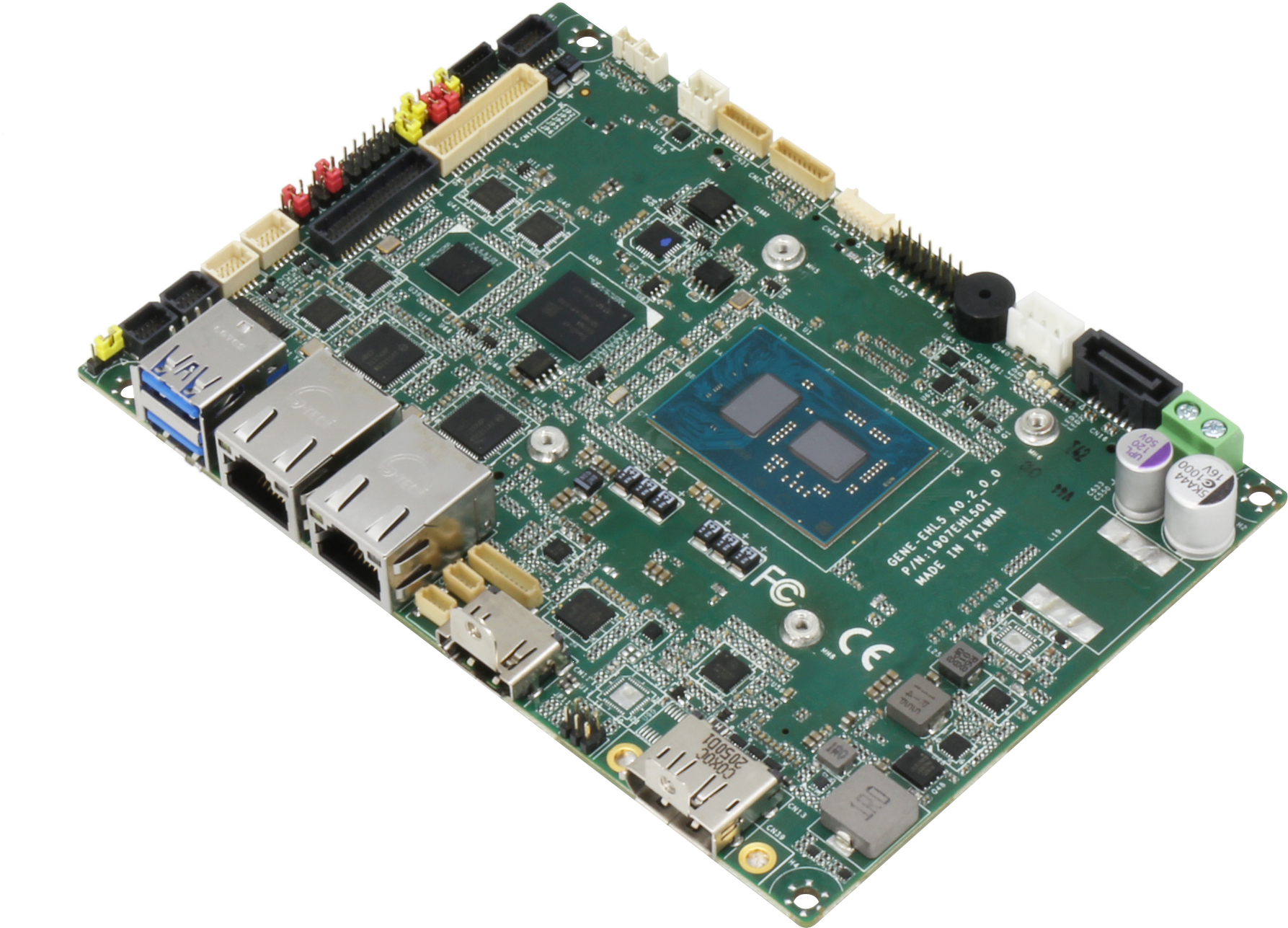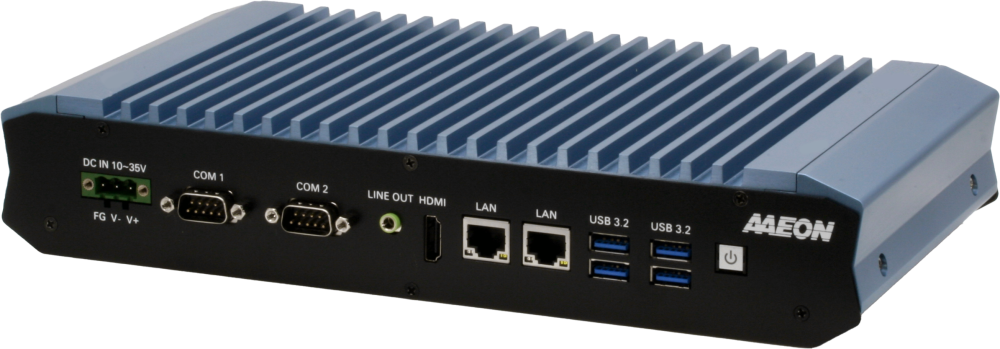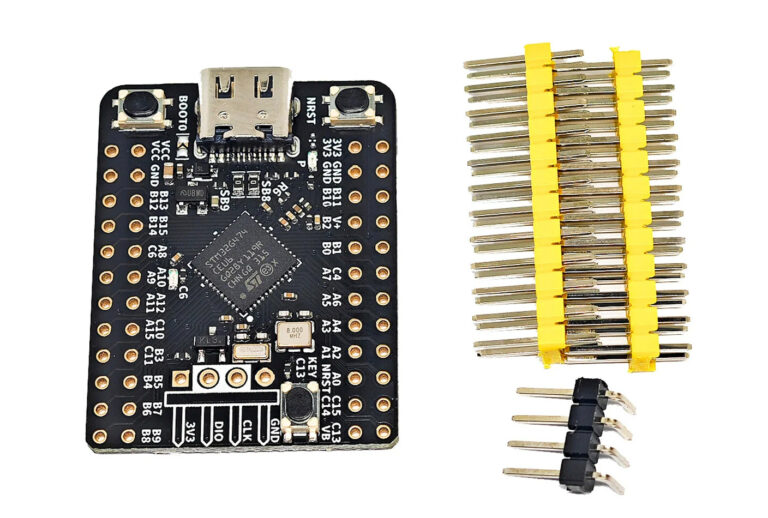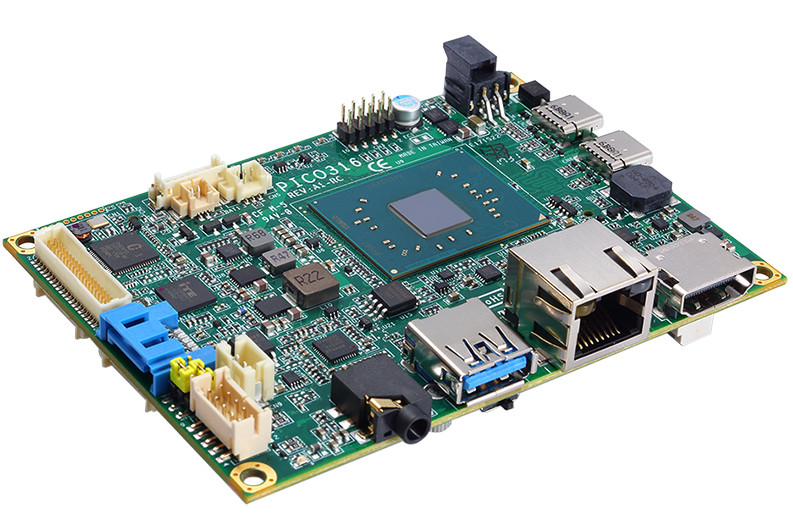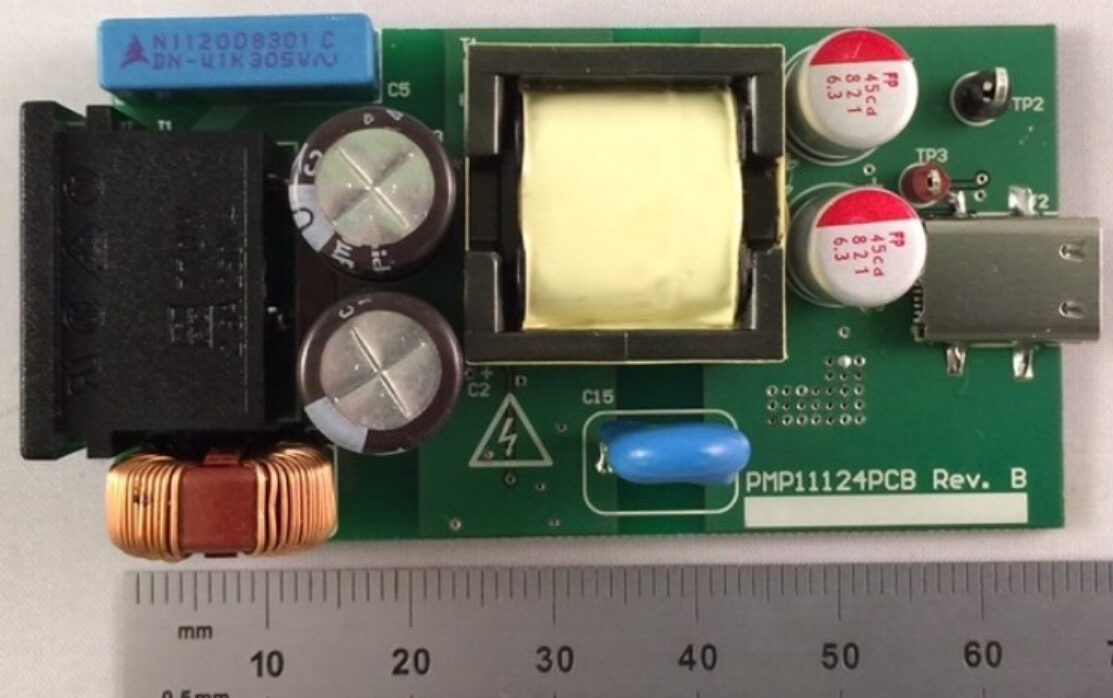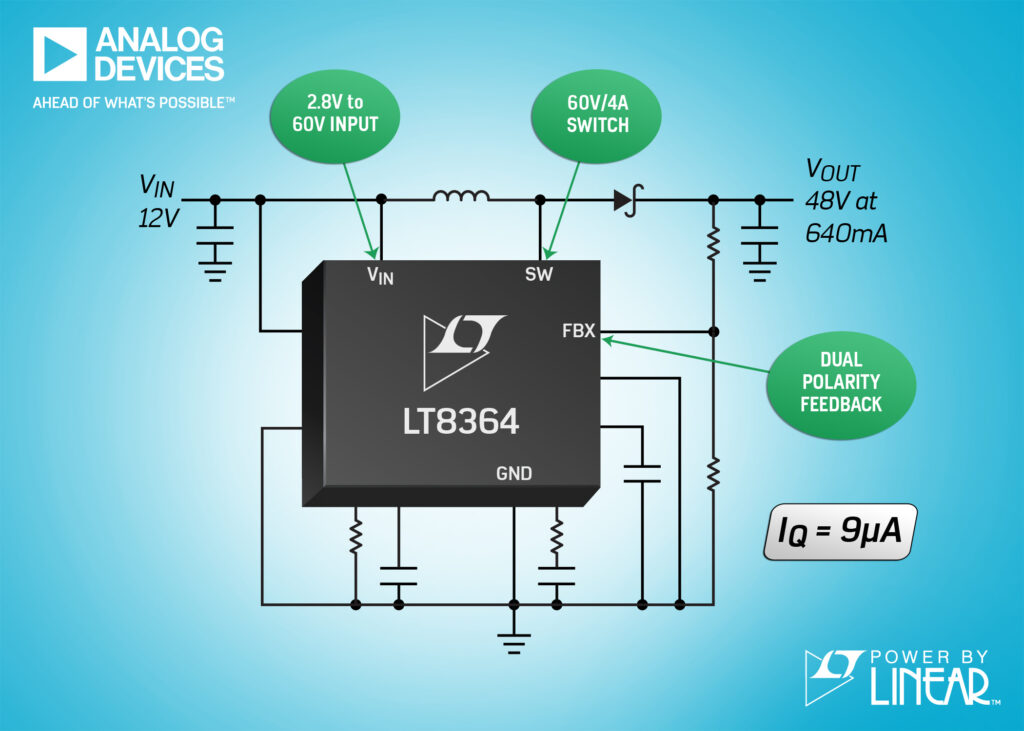
Analog Devices has announced the LT8364 current mode, 2MHz step-up DC/DC converter. It has an internal 4.0A, 60V switch and operates from an input voltage range of 2.8 to 60V.
The ‘Power by Linear’ LT8364 is suitable for applications with input sources ranging from a single-cell Li-Ion battery to multi-cell battery stacks, automotive inputs, telecomms power supplies and industrial power rails.
The LT8364 can be configured as either a boost, SEPIC or an inverting converter. Its switching frequency can be programmed between 300kHz and 2MHz, enabling designers to minimise external component sizes and avoid critical frequency bands, such as AM radio, says Analog Devices. It offers over 90 per cent efficiency while switching at 2MHz. Burst Mode operation reduces quiescent current to only nine microA while keeping output ripple below 15mVp-p. There is the option of a small 4.0 x 3.0mm DFN, or high voltage MSOP-16E package, with small external components to ensure a compact footprint while minimising cost, adds Analog Devices.
The LT8364’s 100-mOhm power switch delivers efficiencies of over 95 per cent. It also offers spread spectrum frequency modulation to minimise EMI concerns. A single feedback pin sets the output voltage whether the output is positive or negative, minimising pin count. Other features include external synchronisation, programmable under-voltage lockout (UVLO), frequency foldback and programmable soft-start.
The two versions available are the LT8364EDE in a 4.0 x 3.0mm DFN-12 package and the LT8364EMSE which is offered in a high voltage MSOP-16E (with four pins removed for high voltage spacing). Industrial temperature (operating at -40 to +125 degree C), the LT8364IDE and LT8364IMSE, and high temperature models, the LT8364HDE and LT8364HMSE, with temperature ranges of -40 to +150 degree C, are also available. All versions are available from stock.
The design includes a bias pin for higher efficiency and positive or negative output voltage programming is possible with a single feedback pin. The device has optional spread spectrum frequency modulation to minimise EMI.





